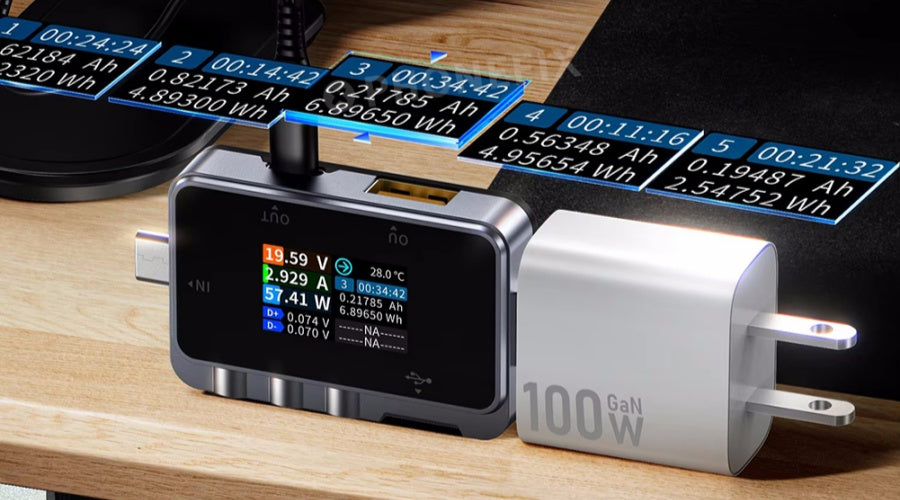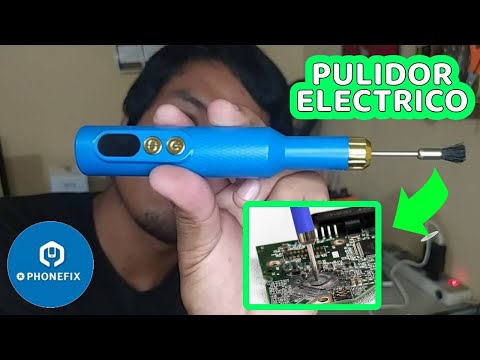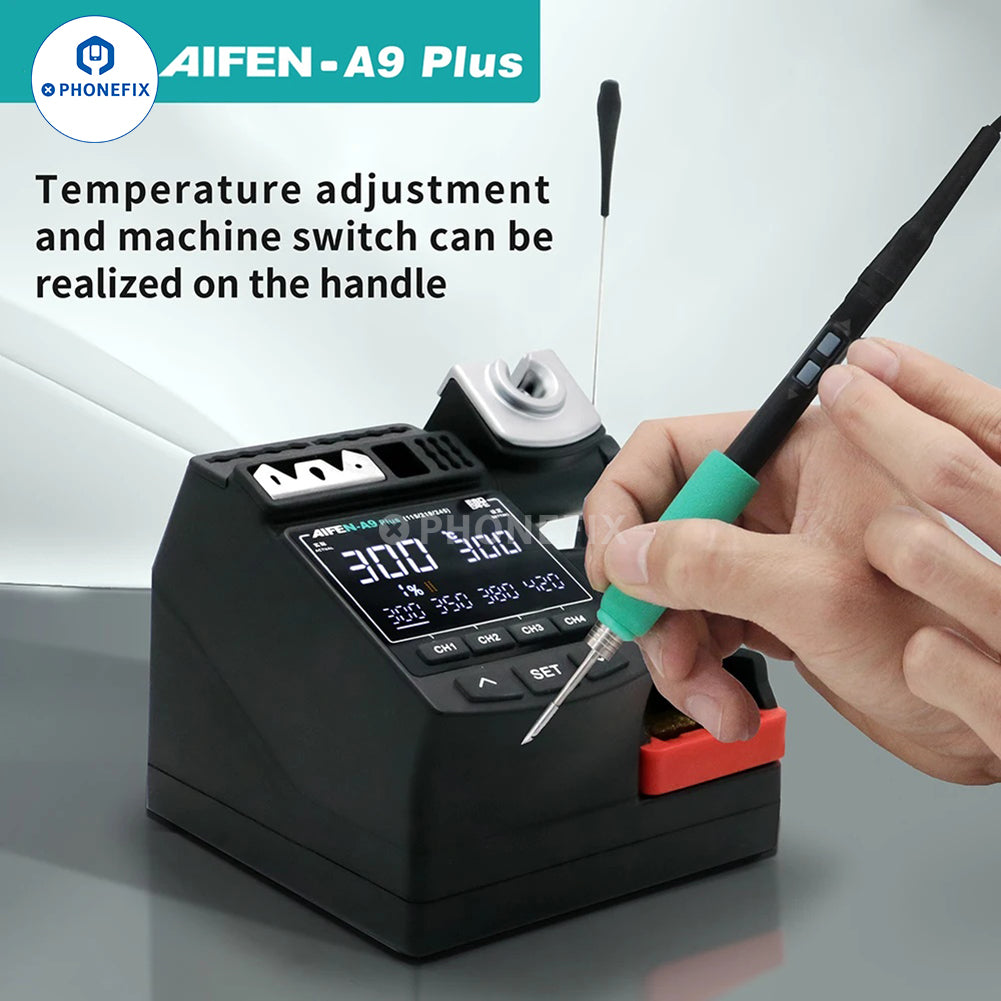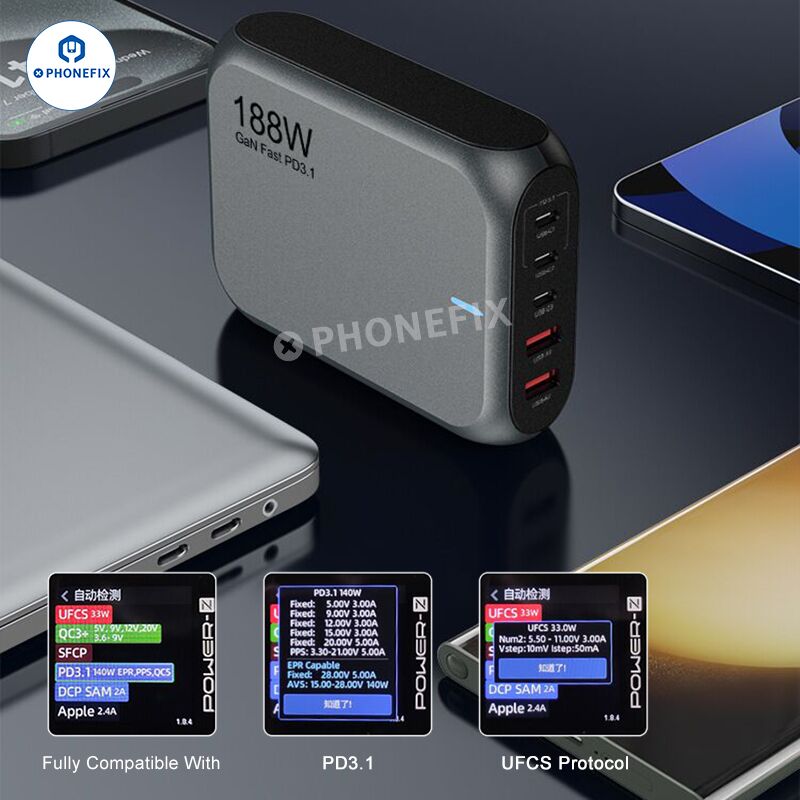
Cell Phone Power System Detection
Confirm whether the mobile phone power management system (including charging circuit, battery and related chips) is working properly, whether there is damage or failure.1. Basic inspection:
Check whether the charging port of the mobile phone is dirty, damaged or bent, and make sure that there are no physical problems with the port and data cable.2. Test the charger, battery and power input
Use voltmeter/ammeter: Measure the voltage and current output of the charger through FNIRSI FNAC-28 to ensure that the charger output meets the requirements of the mobile phone.Check the battery voltage: Use the device to measure the voltage of the battery to confirm whether the battery is normal. Healthy Lithium Batteries usually have a voltage between 3.7V and 4.2V.
Working condition of power management chip: When necessary, check the working condition of power management chip to confirm whether there is any damage or abnormal power circuit.
3. Use FNIRSI FNAC-28 to measure charging current and voltage
Measure the charging process: Connect the mobile phone and charger, and measure the current and voltage during charging through FNIRSI FNAC-28. Make sure that the current and voltage output by the charger meet the standards, and check whether the current is stable.Monitor ripple and noise: Use the ripple monitoring function of FNIRSI FNAC-28 to detect whether there is abnormal fluctuation (ripple) in the charging power supply. This may be a sign of instability in the charger or power circuit, affecting charging efficiency and mobile phone battery health.
4. Check battery and power management system
Test battery health: Check the health of the battery through the device or software. For example, some mobile phones have a battery health management function to help confirm whether the battery is aged or damaged.Analyze the battery charging curve: Use FNIRSI FNAC-28 to detect the current change during battery charging and confirm whether it is normal (for example, the current should gradually decrease during the charging process).
Battery capacity test: If you suspect a battery problem, you can perform a capacity test to see if the battery can charge and discharge as expected.
5. Diagnose and replace parts (if necessary)
Battery replacement: If the battery voltage is abnormal or the battery health is poor, you need to consider replacing the battery.Power management IC/charging IC replacement: If the power management chip or Charging IC is damaged, it may need to be replaced.
Other power circuit inspection: Including checking whether the power circuit on the motherboard is damaged, whether there is a short circuit or an open circuit.
Charging Troubleshooting
Determine whether there is a problem with the charging-related equipment (charger, battery, USB interface, etc.) and find the root cause of the charging failure.
1. Confirm the symptoms of charging problems
Physical inspection: Check the charger, charging cable, and mobile phone interface for obvious damage, such as loose, bent, or dirty interfaces.2. Check the charger and data cable
Test the charger output with FNIRSI FNAC-28: Test whether the charger is working properly, measure the output voltage and current, and ensure that it meets the mobile phone charging requirements. If the output voltage is unstable or does not meet the standard, it may be a charger failure.Test the current and voltage of the data line: Measure the current transmitted by the data line through FNIRSI FNAC-28 to confirm whether the data line is damaged or has poor contact.
3. Test the charging interface of the mobile phone
Check the interface status: Check whether the charging interface of the mobile phone is loose, damaged or has debris. Use tools such as a microscope to check whether the interface pins are damaged, worn or corroded.Use FNIRSI FNAC-28 to measure the interface current: Plug in the data line and use FNIRSI FNAC-28 to measure the input current and voltage of the mobile phone interface to confirm whether it is normal. If no current flows, it may be a problem with the mobile phone interface.
4. Test the charging current and voltage
Connect FNIRSI FNAC-28 to measure: Plug in the iPhone Charger and data line, connect FNIRSI FNAC-28 for measurement, and observe the current and voltage of the mobile phone during charging.5. Diagnose and solve charging problems
Battery problems: If the charging current is normal but the battery cannot be charged, there may be a problem with the battery itself. You can consider replacing the battery.Charging IC/Power Management Chip Failure: If the charging current is unstable or there is no current at all, the charging IC or power management chip may be damaged and need to be replaced.
USB interface/connection problem: If the interface is loose or damaged, the interface needs to be repaired or replaced.
Incompatible or damaged charger: If the charger output current is unstable or does not meet the standard, the charger needs to be replaced.
Summary
The workflow of using FNIRSI FNAC-28 for power system detection and charging troubleshooting is basically:- Identify the problem symptoms
- Perform physical and electrical inspections
- Use tools (such as FNIRSI FNAC-28) to accurately measure current, voltage, charging protocol, etc.
- Troubleshoot and solve the problem based on the measurement results (replace the battery, charging IC, power management chip or charger, etc.)
The FNIRSI FNAC-28 USB test tool plays a very important role in the maintenance of modern electronic products, especially in the diagnosis of charging problems, helping maintenance engineers identify common faults (such as damaged charging ports, data cable problems, incompatible chargers, etc.) and accurately locate the source of the problem. The above tools can be obtained from Phonefix. For more USB voltage and current measurement tools, please follow China Phonefix for consultation.












